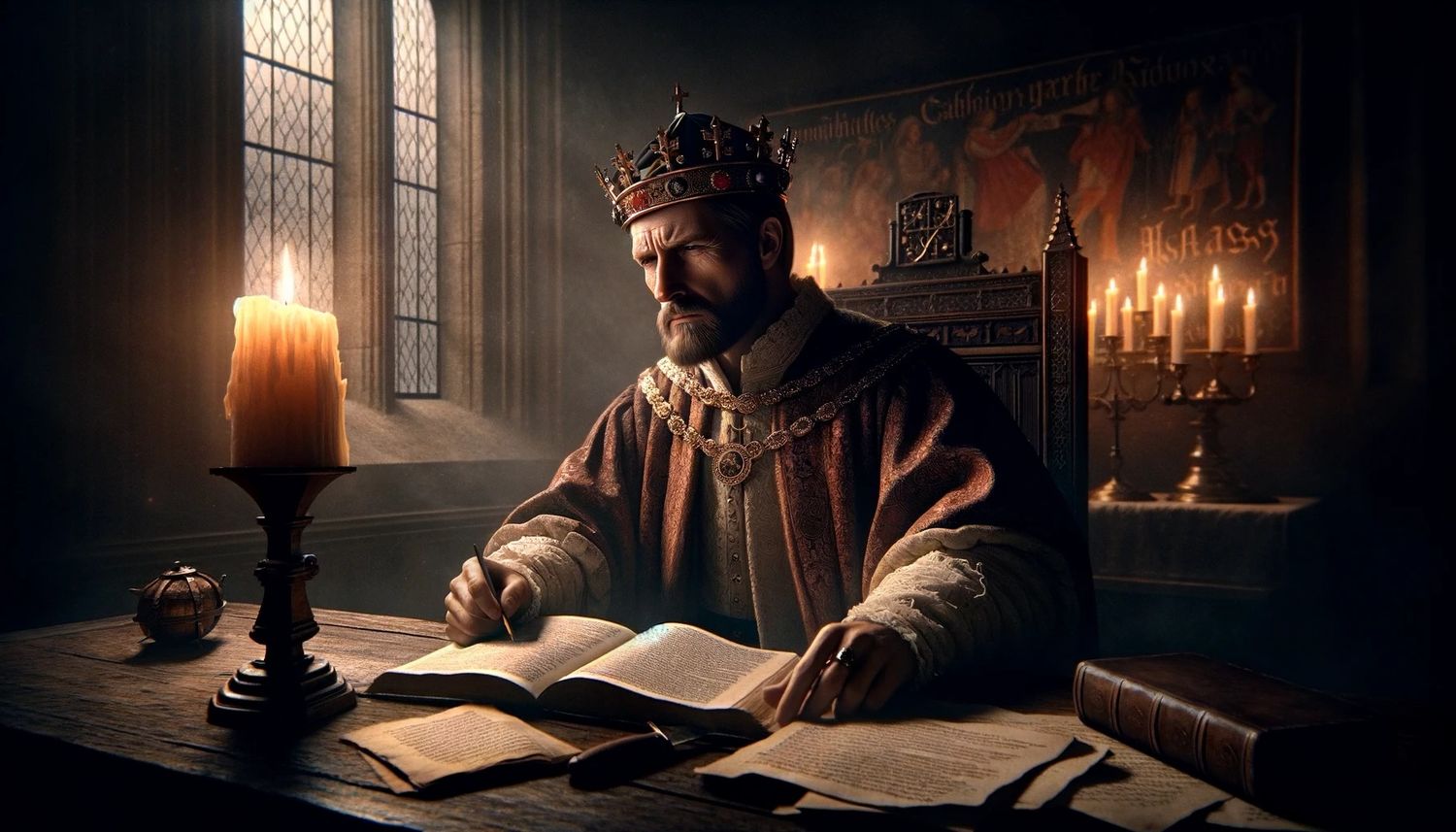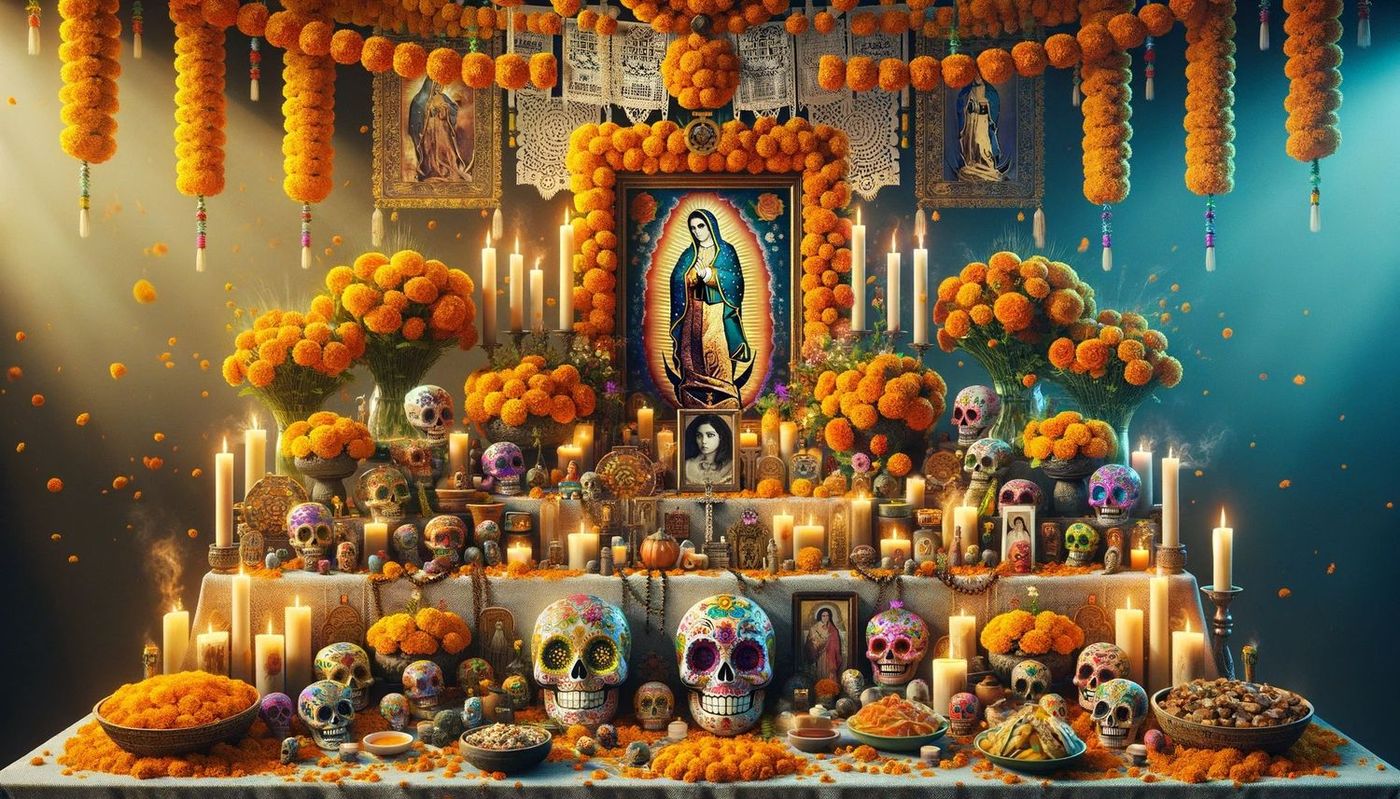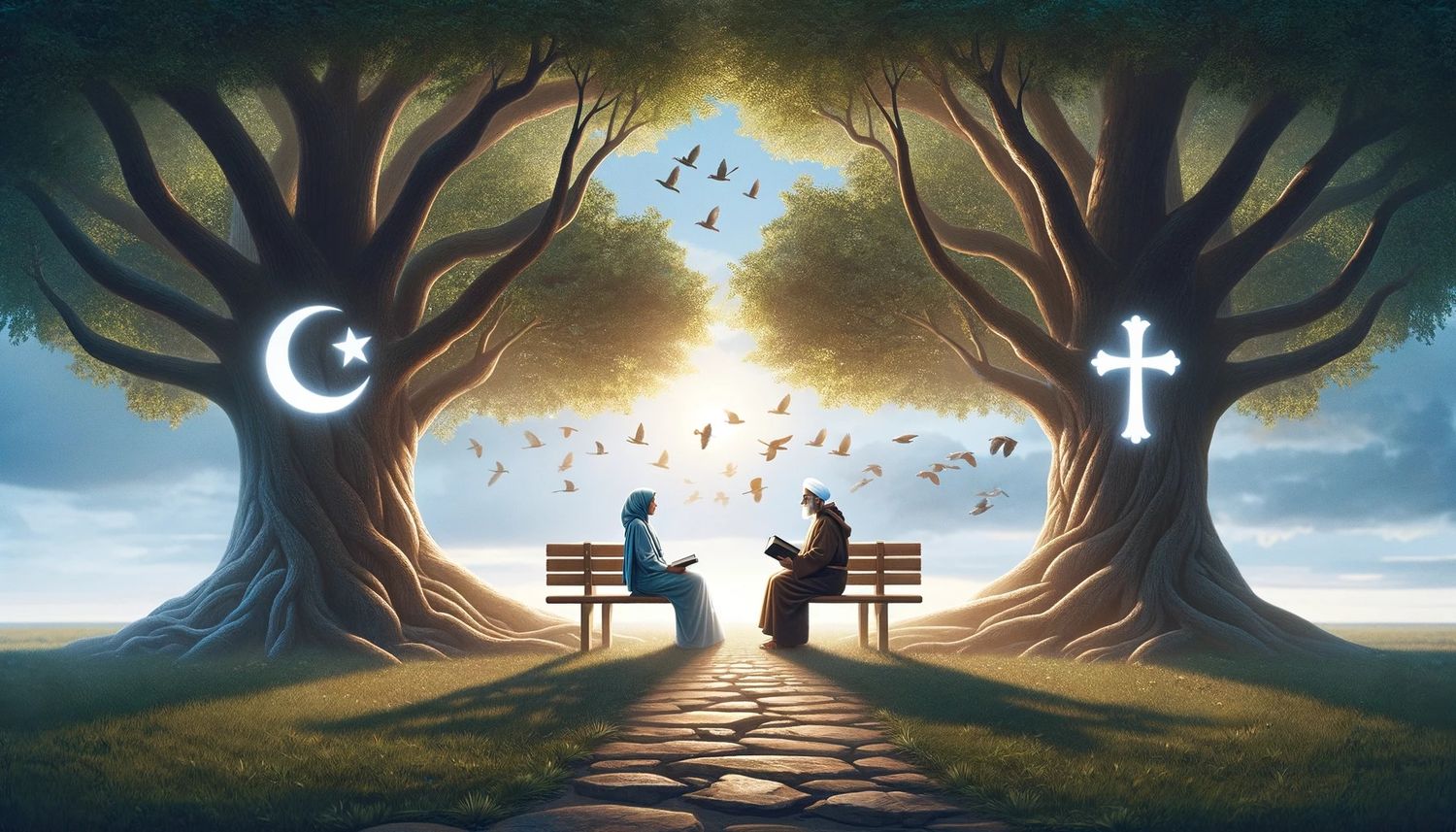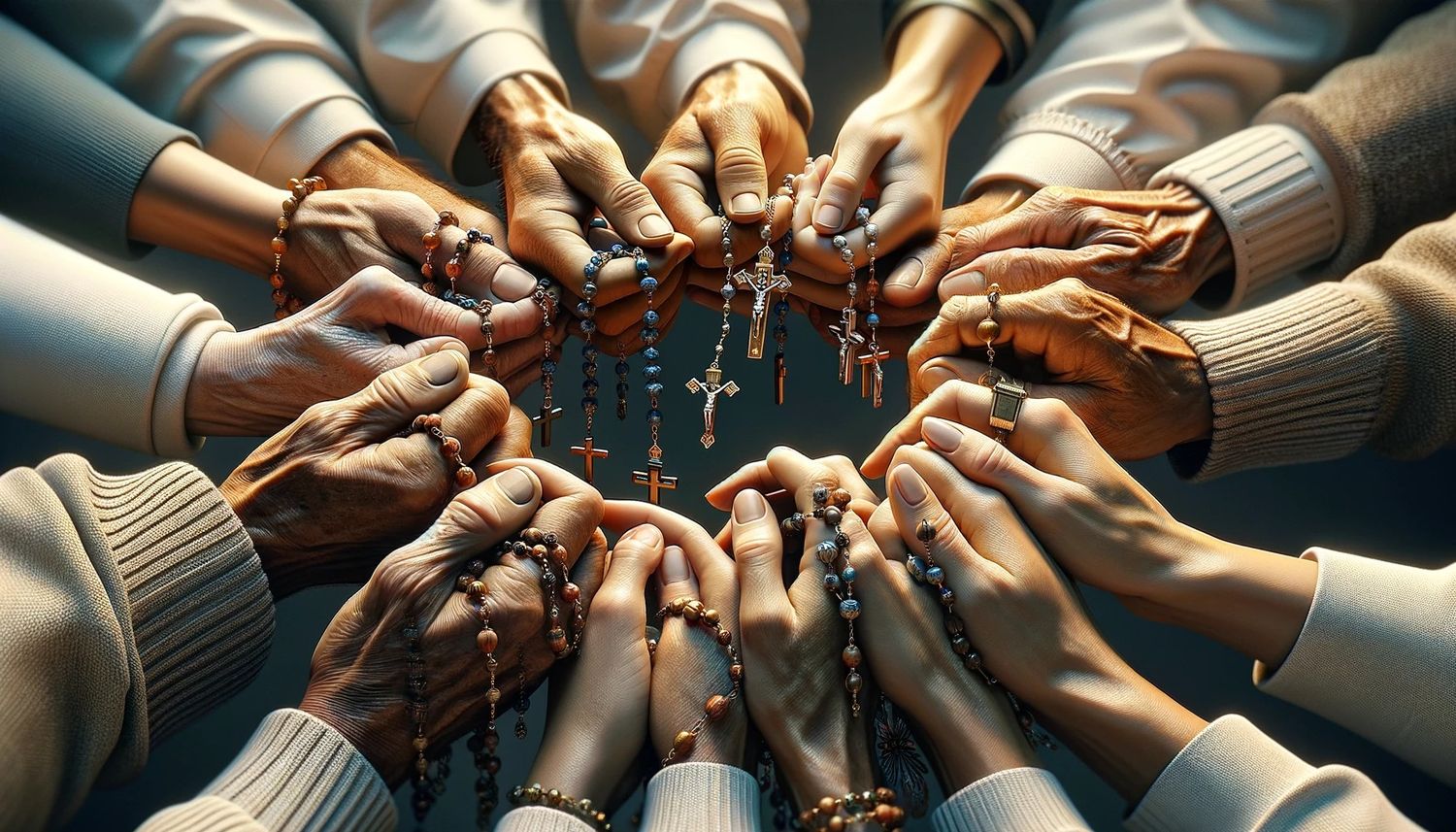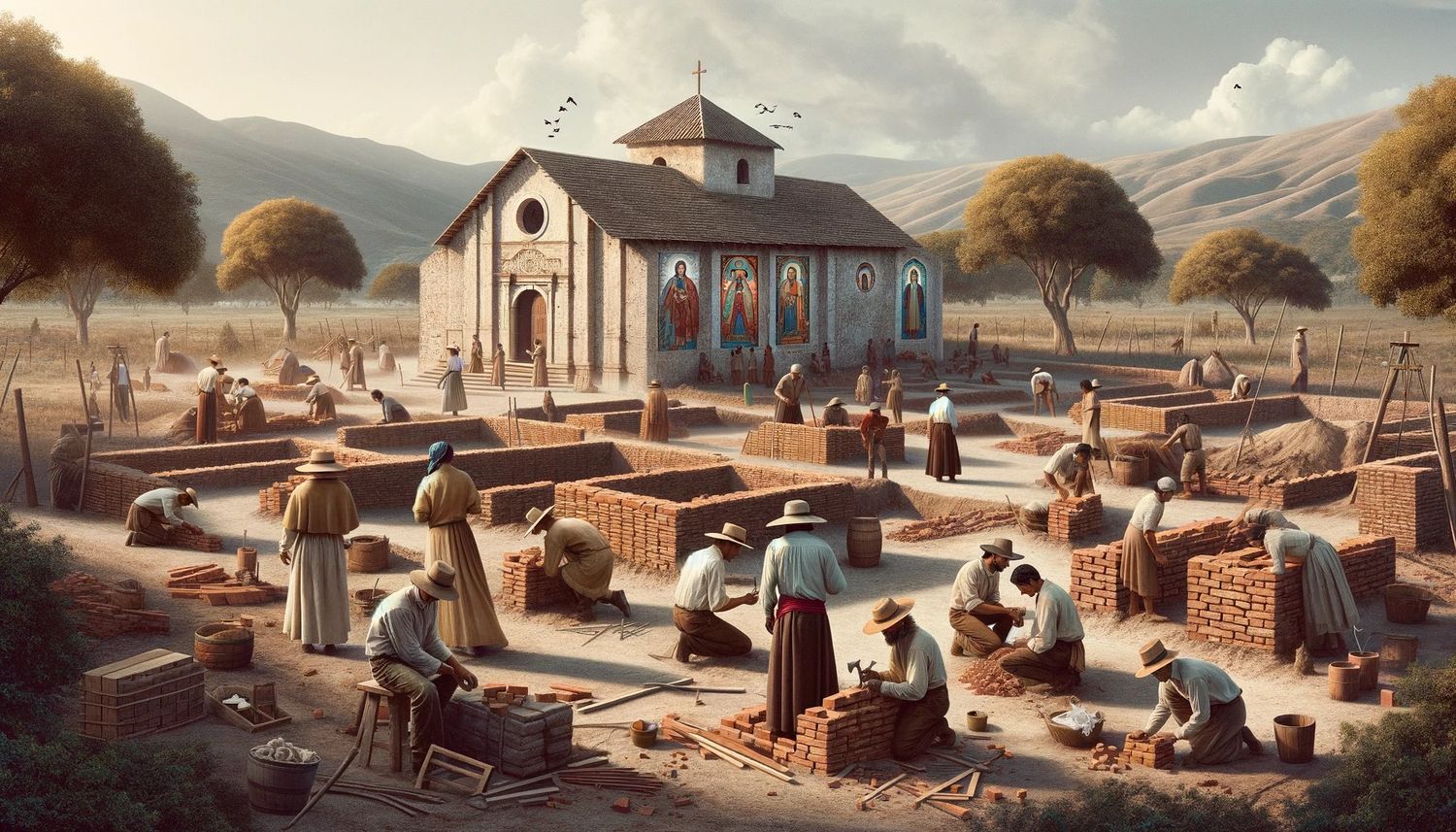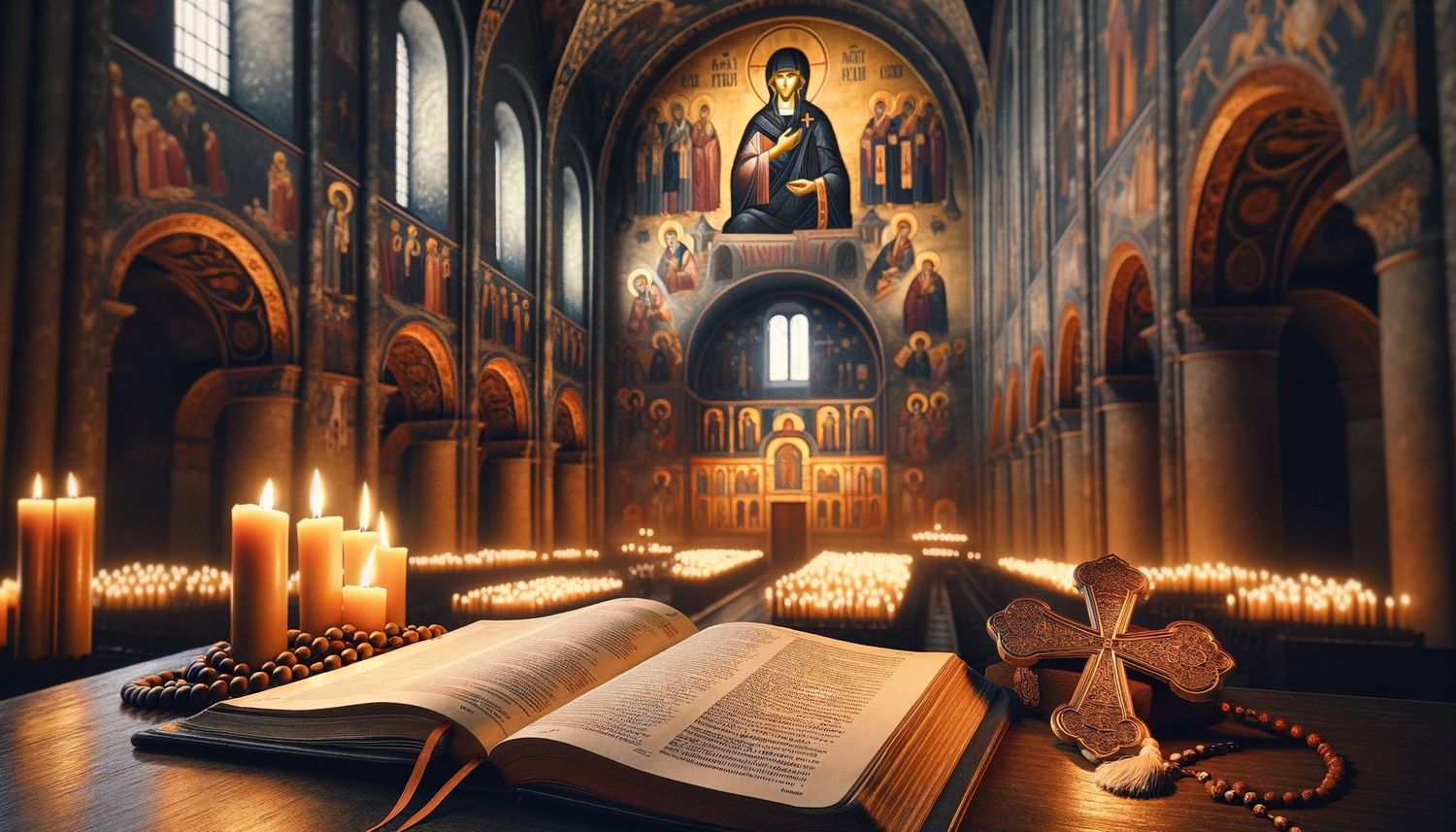Home>Theology and Spirituality>Why Did The Aztecs Convert To Catholicism
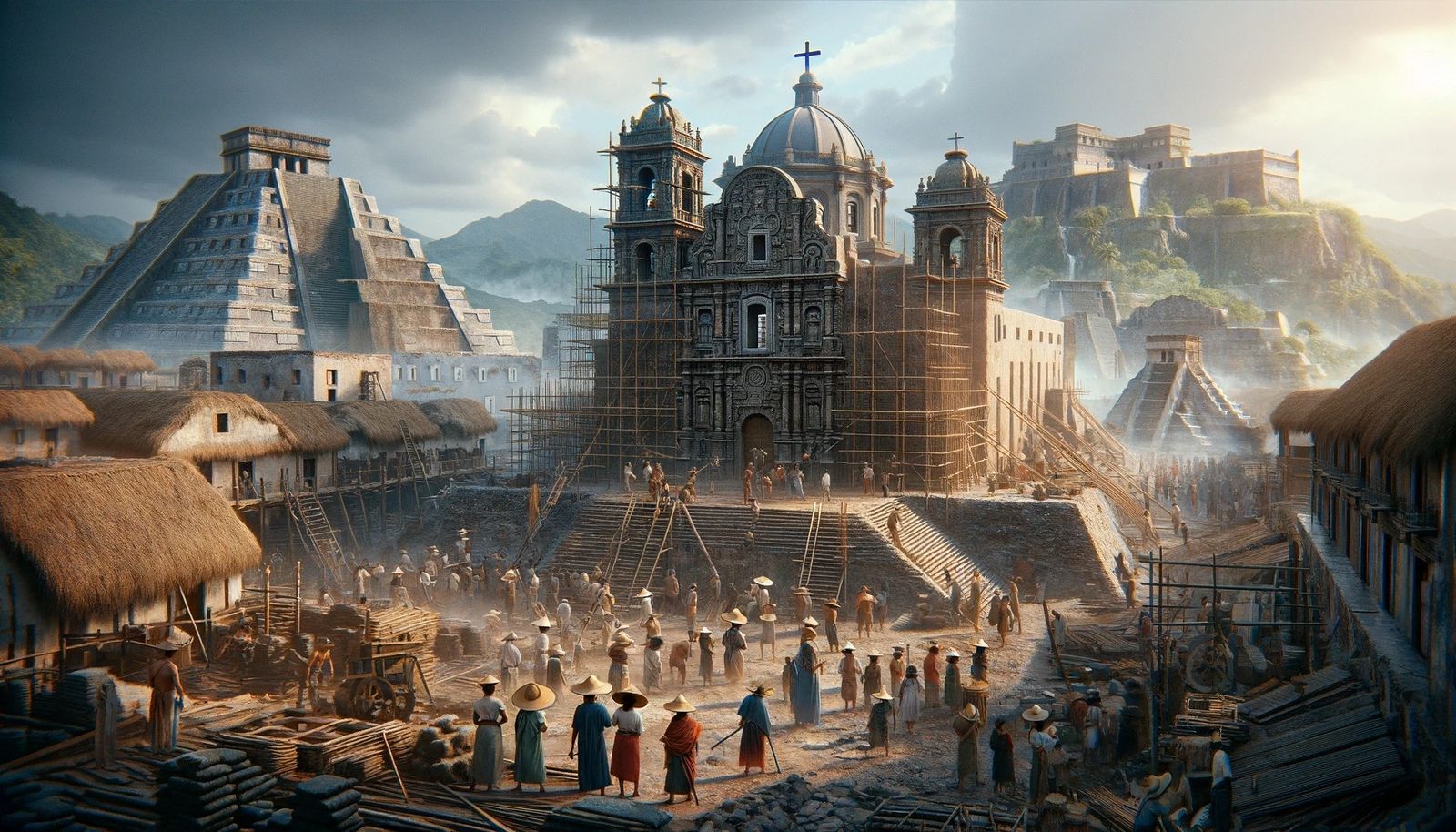

Theology and Spirituality
Why Did The Aztecs Convert To Catholicism
Published: February 15, 2024
Jason DeRose, Managing Editor at Christian.net, uses his expertise in religion and journalism to deepen understanding of faith's societal impacts. His editorial leadership, coupled with a strong academic background, enriches the platform’s diverse content, earning him recognition in both journalism and religious circles.
Discover the reasons behind the Aztecs' conversion to Catholicism and its impact on their theology and spirituality. Explore the historical and cultural factors that influenced this significant religious shift.
(Many of the links in this article redirect to a specific reviewed product. Your purchase of these products through affiliate links helps to generate commission for Christian.net, at no extra cost. Learn more)
Table of Contents
Introduction
The conversion of the Aztecs to Catholicism is a complex and multifaceted historical phenomenon that unfolded during the early colonial period in Mesoamerica. This pivotal moment in history marked the intersection of indigenous spirituality and the arrival of Spanish conquistadors, leading to a profound transformation in the religious landscape of the region. Understanding the factors that contributed to the Aztec conversion to Catholicism requires delving into the intricate dynamics of cultural, political, and religious encounters that characterized this era.
The clash of civilizations between the Aztec Empire and the Spanish conquistadors, led by Hernán Cortés, set the stage for a dramatic reconfiguration of belief systems and religious practices. The encounter between these two distinct worlds brought about a profound and enduring impact on the spiritual and cultural identity of the Aztec people. Exploring the motivations behind the Aztec conversion to Catholicism unveils a tapestry of historical, sociocultural, and theological threads that shaped this transformative process.
As we embark on this exploration, it is essential to approach the topic with sensitivity and a nuanced understanding of the complexities inherent in the historical events that unfolded. By delving into the historical context and the interplay of diverse forces, we can gain insight into the profound implications of the Aztec conversion to Catholicism and the enduring legacy of this pivotal moment in the history of Mesoamerica.
Read more: Why Did Clovis Convert To Catholicism
The Arrival of the Spanish Conquistadors
The arrival of the Spanish conquistadors in the early 16th century marked a seismic shift in the trajectory of Mesoamerican history. Led by the ambitious and determined Hernán Cortés, the Spanish expedition set its sights on the fabled lands of the Aztec Empire, driven by a potent combination of imperial aspirations, religious zeal, and the pursuit of wealth. The formidable maritime prowess of the Spanish conquistadors brought them to the shores of the Yucatán Peninsula in 1519, where they encountered a rich tapestry of indigenous cultures, chief among them being the mighty Aztec civilization.
The arrival of the Spanish conquistadors on the shores of Mesoamerica sent ripples of apprehension and curiosity through the Aztec Empire. For the Aztec ruler, Moctezuma II, the news of the arrival of these enigmatic foreigners posed a conundrum. The Aztecs, with their advanced urban centers, intricate social hierarchies, and sophisticated religious practices, found themselves confronted with an unprecedented challenge as the Spanish conquistadors embarked on their quest for dominion and conversion.
The Spanish conquest of Mesoamerica was characterized by a potent combination of military might, technological superiority, and alliances with indigenous groups who harbored grievances against the Aztec Empire. The arrival of the Spanish conquistadors heralded an era of upheaval and transformation, as the forces of colonization and evangelization converged to reshape the spiritual and cultural landscape of the region.
The encounter between the Spanish conquistadors and the Aztec Empire was marked by a profound dissonance of worldviews, as the Spaniards sought to impose their religious and political authority on the indigenous populations they encountered. This clash of civilizations set in motion a series of events that would irrevocably alter the course of history, culminating in the eventual conversion of the Aztecs to Catholicism.
The arrival of the Spanish conquistadors in Mesoamerica precipitated a momentous chapter in the annals of history, laying the groundwork for a complex and tumultuous interplay of conquest, resistance, and cultural exchange. The enduring legacy of this pivotal moment continues to reverberate through the cultural tapestry of modern-day Mexico, serving as a testament to the enduring impact of the Spanish conquest on the spiritual and historical consciousness of the Aztec people.
The Role of Hernán Cortés
Hernán Cortés, a figure of indomitable ambition and strategic acumen, played a pivotal role in the Spanish conquest of the Aztec Empire and the subsequent conversion of the indigenous population to Catholicism. Born in Medellín, Spain, Cortés embarked on a daring expedition to the New World, driven by a potent blend of imperial fervor, religious zeal, and the pursuit of glory and riches. His audacious spirit and unwavering determination propelled him to the forefront of the Spanish conquest of Mesoamerica, where he would leave an indelible mark on the course of history.
Cortés's arrival in Mesoamerica in 1519 heralded a new chapter in the annals of exploration and conquest. His leadership and strategic acumen were instrumental in forging alliances with indigenous groups who harbored grievances against the Aztec Empire, thereby leveraging internal divisions to further his own ambitions. Through a combination of military prowess, diplomatic finesse, and shrewd maneuvering, Cortés navigated the complex sociopolitical landscape of Mesoamerica, laying the groundwork for the eventual downfall of the Aztec Empire.
At the heart of Cortés's role in the conversion of the Aztecs to Catholicism lay his fervent commitment to the propagation of the Christian faith. As he advanced through the heartland of the Aztec Empire, Cortés sought to assert the religious and political authority of Spain, viewing the conversion of the indigenous population as a crucial aspect of the broader project of colonization. His interactions with indigenous leaders, including the Aztec ruler Moctezuma II, were characterized by a complex interplay of diplomacy, coercion, and religious evangelization, as Cortés endeavored to secure the allegiance of the native population to the Catholic faith.
Cortés's legacy as a transformative figure in the history of Mesoamerica is inextricably linked to the profound impact of his endeavors on the spiritual and cultural identity of the Aztec people. His role in the conversion of the Aztecs to Catholicism stands as a testament to the enduring legacy of the Spanish conquest, underscoring the complex interplay of power, religion, and cultural exchange that defined this transformative era in Mesoamerican history. Cortés's indelible imprint on the religious and cultural landscape of the region serves as a poignant reminder of the enduring legacy of the Spanish conquest and its enduring impact on the spiritual and historical consciousness of the Aztec people.
The Influence of Franciscan Missionaries
The arrival of Franciscan missionaries in the wake of the Spanish conquest of Mesoamerica heralded a new chapter in the religious and cultural landscape of the region. Armed with unwavering zeal and a fervent commitment to the propagation of the Christian faith, the Franciscan friars embarked on a mission to evangelize the indigenous populations of Mesoamerica, including the Aztecs. Their arrival marked a pivotal juncture in the process of religious transformation, as they sought to supplant indigenous belief systems with the tenets of Catholicism.
The Franciscan missionaries, guided by the principles of poverty, humility, and devotion to the evangelical mission, endeavored to impart the teachings of Christianity to the Aztec people. Their efforts were characterized by a multifaceted approach that encompassed preaching, catechism, the establishment of mission churches, and the translation of religious texts into indigenous languages. Through these endeavors, the Franciscan missionaries sought to instill the doctrines of Catholicism and cultivate a fervent adherence to the Christian faith among the indigenous population.
Central to the influence of the Franciscan missionaries was their engagement with indigenous religious practices and belief systems. Recognizing the deeply ingrained spiritual traditions of the Aztec people, the Franciscan friars endeavored to reconcile indigenous customs with the tenets of Catholicism, thereby facilitating a process of syncretism. This approach, characterized by a willingness to incorporate elements of indigenous spirituality into the framework of Catholicism, served as a means of fostering a sense of continuity and familiarity among the newly converted Aztecs.
The Franciscan missionaries also played a pivotal role in the establishment of mission churches and religious institutions, which served as focal points for the dissemination of Catholic teachings and the cultivation of religious devotion. These mission churches, often built atop the ruins of indigenous temples, symbolized the triumph of Catholicism over indigenous belief systems and served as tangible manifestations of the enduring influence of the Franciscan missionaries in shaping the religious landscape of Mesoamerica.
The enduring legacy of the Franciscan missionaries in the conversion of the Aztecs to Catholicism underscores the profound impact of their endeavors on the spiritual and cultural identity of the indigenous population. Their unwavering commitment to the evangelical mission, coupled with their willingness to engage with indigenous traditions, left an indelible imprint on the religious consciousness of the Aztec people, shaping the contours of their spiritual beliefs and practices for generations to come.
The Impact of Disease and Warfare
The convergence of disease and warfare during the Spanish conquest of Mesoamerica exerted a profound and far-reaching impact on the indigenous populations, including the Aztecs. The introduction of European-borne diseases, such as smallpox, measles, and typhus, to which the indigenous populations had no immunity, precipitated a catastrophic demographic collapse. The devastating toll of these diseases, exacerbated by the ravages of warfare and the upheaval wrought by the Spanish conquest, wrought havoc on the social fabric of the Aztec Empire, leading to widespread mortality and societal disintegration.
The virulence of these diseases, coupled with the harsh conditions imposed by the Spanish conquest, precipitated a demographic catastrophe of staggering proportions. The once-thriving indigenous populations, including the Aztecs, were decimated by the relentless onslaught of epidemic diseases, leading to a precipitous decline in population and a profound disruption of social and cultural norms. The impact of disease, compounded by the trauma of warfare and colonization, engendered a climate of profound uncertainty and upheaval, as the indigenous populations grappled with the staggering toll of these cataclysmic forces.
The ravages of warfare, characterized by relentless conflict, subjugation, and the imposition of Spanish hegemony, further exacerbated the plight of the Aztec people. The Spanish conquest, marked by a potent combination of military might and strategic alliances, precipitated a protracted era of conflict and upheaval, as the Aztecs valiantly resisted the encroachments of the Spanish conquistadors. The relentless onslaught of warfare, coupled with the insidious spread of epidemic diseases, plunged the Aztec Empire into a maelstrom of chaos and despair, as the indigenous populations grappled with the existential threat posed by these converging forces.
The enduring legacy of disease and warfare during the Spanish conquest of Mesoamerica reverberates through the annals of history, underscoring the profound and enduring impact of these cataclysmic forces on the spiritual, cultural, and demographic landscape of the region. The plight of the Aztec people, ravaged by the relentless onslaught of epidemic diseases and the trauma of warfare, stands as a poignant testament to the enduring legacy of this transformative era, serving as a somber reminder of the profound toll exacted by the forces of conquest and colonization.
Read more: Why Did James II Convert To Catholicism
The Syncretism of Aztec Religion and Catholicism
The convergence of Aztec religion and Catholicism during the early colonial period in Mesoamerica engendered a profound process of syncretism, giving rise to a rich tapestry of religious beliefs and practices that reflected the complex interplay of indigenous spirituality and the tenets of Catholicism. This transformative phenomenon, characterized by the fusion of diverse religious traditions, heralded a new chapter in the spiritual and cultural landscape of the region, shaping the contours of belief and ritual for generations to come.
At the heart of the syncretic process lay the intricate interweaving of Aztec religious practices with the doctrines and rituals of Catholicism. The Franciscan missionaries, cognizant of the deeply ingrained spiritual traditions of the Aztec people, sought to reconcile indigenous customs with the tenets of Catholicism, thereby fostering a sense of continuity and familiarity among the newly converted Aztecs. This approach, marked by a willingness to incorporate elements of indigenous spirituality into the framework of Catholicism, served as a catalyst for the emergence of a syncretic religious landscape that reflected the dynamic interplay of diverse cultural and spiritual influences.
The syncretic fusion of Aztec religion and Catholicism found expression in a myriad of religious practices and beliefs that reflected the complex interplay of indigenous traditions and Christian doctrine. Indigenous deities, such as Huitzilopochtli and Quetzalcoatl, became intertwined with Christian saints, while sacred sites and rituals were imbued with layers of symbolic meaning that bridged the spiritual realms of both traditions. This syncretic fusion, characterized by a harmonious blending of diverse religious elements, served as a testament to the enduring resilience of indigenous spirituality in the face of external religious imposition.
The enduring legacy of syncretism in the religious and cultural landscape of Mesoamerica underscores the profound impact of this transformative process on the spiritual identity of the Aztec people. The syncretic fusion of Aztec religion and Catholicism, marked by a dynamic interplay of diverse religious traditions, served as a testament to the enduring resilience of indigenous spirituality in the face of external religious imposition. This syncretic tapestry, woven from the threads of Aztec spirituality and Catholic doctrine, stands as a poignant testament to the enduring legacy of cultural exchange and adaptation, shaping the contours of religious belief and practice in Mesoamerica for centuries to come.
Conclusion
The conversion of the Aztecs to Catholicism stands as a pivotal chapter in the annals of Mesoamerican history, marked by a complex interplay of conquest, evangelization, and cultural exchange. The arrival of the Spanish conquistadors, led by the indomitable Hernán Cortés, precipitated a seismic shift in the spiritual and cultural landscape of the region, setting in motion a transformative process that would irrevocably alter the course of history. The convergence of diverse forces, including the influence of Franciscan missionaries, the impact of disease and warfare, and the syncretic fusion of Aztec religion and Catholicism, engendered a profound and enduring legacy that continues to reverberate through the cultural tapestry of modern-day Mexico.
The role of Hernán Cortés, characterized by a potent blend of imperial ambition and religious zeal, played a pivotal role in shaping the trajectory of the Aztec conversion to Catholicism. His unwavering commitment to the propagation of the Christian faith, coupled with his strategic acumen and leadership, left an indelible imprint on the spiritual and cultural identity of the Aztec people, underscoring the enduring impact of the Spanish conquest on the religious consciousness of the indigenous population.
The influence of Franciscan missionaries, guided by unwavering zeal and a fervent commitment to the evangelical mission, heralded a new chapter in the religious and cultural landscape of Mesoamerica. Their multifaceted approach to evangelization, characterized by a willingness to engage with indigenous traditions and foster a sense of continuity, left an indelible mark on the religious consciousness of the Aztec people, shaping the contours of their spiritual beliefs and practices for generations to come.
The impact of disease and warfare, precipitated by the Spanish conquest, wrought havoc on the social and demographic fabric of the Aztec Empire, leading to a profound disruption of indigenous societal norms and cultural traditions. The convergence of epidemic diseases and relentless conflict exacted a staggering toll on the Aztec population, plunging the region into a maelstrom of chaos and despair, underscoring the profound and enduring impact of these cataclysmic forces on the spiritual and cultural landscape of Mesoamerica.
The syncretic fusion of Aztec religion and Catholicism, characterized by a dynamic interplay of diverse religious traditions, served as a testament to the enduring resilience of indigenous spirituality in the face of external religious imposition. This transformative process, marked by the harmonious blending of diverse religious elements, shaped the contours of religious belief and practice in Mesoamerica, leaving an indelible imprint on the spiritual identity of the Aztec people.
In conclusion, the conversion of the Aztecs to Catholicism stands as a testament to the enduring legacy of conquest, evangelization, and cultural exchange, underscoring the profound and multifaceted impact of this transformative process on the spiritual and cultural identity of the indigenous population. The enduring legacy of this pivotal moment in history serves as a poignant reminder of the enduring resilience and adaptability of indigenous spirituality in the face of external religious imposition, shaping the contours of religious belief and practice in Mesoamerica for centuries to come.

